Life is a special condition shared by all living things. People generally find it easy to tell living things from nonliving things. A butterfly, a horse, and a tree are obviously alive. A bicycle, a house, and a stone, on the other hand, are obviously not alive. People consider a thing living if it is capable of certain activities, such as growth and reproduction.
Biologists have vast knowledge of living things. But they find it hard to come up with a satisfactory definition of what life actually is. The difficulty comes in establishing an exact dividing line between living and nonliving things. For example, a virus by itself is a lifeless particle. But inside a living cell, a virus takes on lifelike activities. Viruses seem to be on the boundary between life and nonlife.
Loading the player...Cell division
Rather than trying to define life precisely, most biologists try to understand life better by studying living things. There are more than 10 million species (kinds) of living things on Earth. Scientific evidence suggests that all of them evolved (developed) over billions of years from a single basic, ancient life form.
A living thing is called an organism. Organisms range in size from gigantic blue whales and towering sequoia trees to bacteria so tiny that they are invisible to the naked eye. Many organisms consist of a single cell, the basic unit of life. Other organisms, such as plants and animals, have bodies made up of billions of cells.
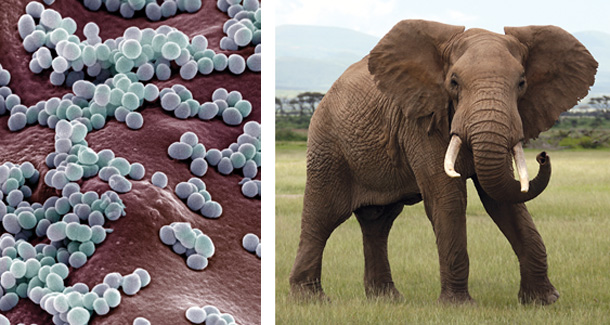
Despite their differences, all living things are made of the same basic chemical elements. These elements combine in complex ways to form all of the parts of living cells.
Living things depend on one another and on their surroundings to provide food, water, and other necessities of life. For example, many communities of living things depend on energy from the sun. Plants, algae, and certain microscopic organisms can turn this energy into food through a process called photosynthesis. Other living things must eat or absorb food from the photosynthesizing organisms. The study of the relationships between organisms and their environment is called ecology.
Scientists have long sought answers to two major questions about life: “How did life begin on Earth?” and “Does life exist elsewhere?” Both matters are the focus of much scientific research.
The characteristics of living things
Nearly all living things share certain basic characteristics, including reproduction, growth, metabolism, movement, responsiveness, and adaptation. Not every organism exhibits all these abilities, and even nonliving things may show some of them. But taken as a group, these characteristics provide insight into the basic nature of living things.
Reproduction
is the process by which living things create more of their own kind. There are two major types of reproduction: asexual and sexual.
In asexual reproduction, a new organism develops from a single parent organism. Many organisms reproduce asexually. Bacteria and other single-celled organisms, for example, simply divide in two when they reach a certain size.
In sexual reproduction, a new organism develops from the union of two sex cells. These cells usually come from two distinct parent organisms—a male and a female. Human beings and most other animals reproduce sexually. Some organisms, including sea anemones, flatworms, and many plants, can reproduce either sexually or asexually.
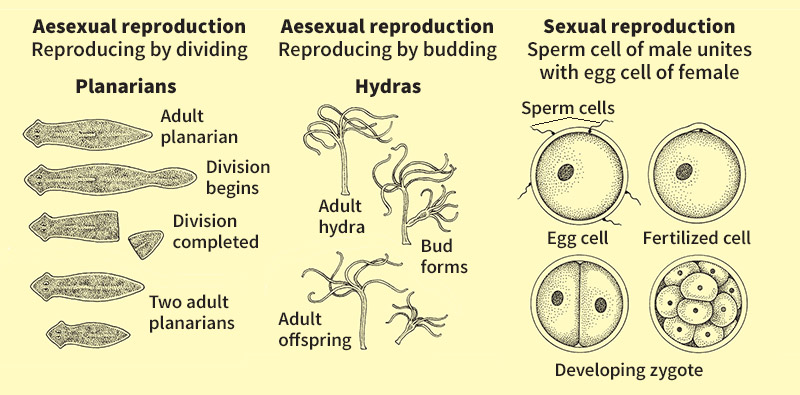
Growth
is an increase in the size of an organism as it gets older. Plants grow by taking in simple molecules, such as carbon dioxide and water, and changing them into complex plant materials. Animals grow by eating food and changing it into animal tissue.
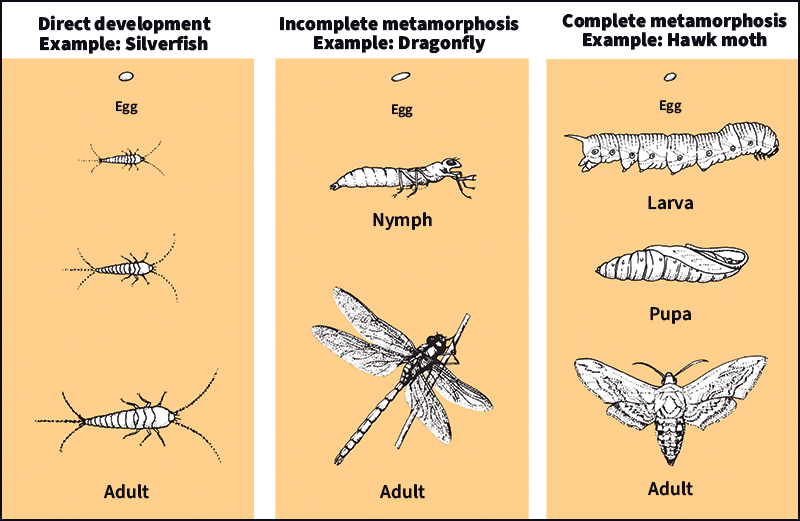
Some nonliving things get larger in a process called accretion. For example, salt crystals increase in size as new layers of salt form on their surfaces. But only living things grow by building themselves up from within.
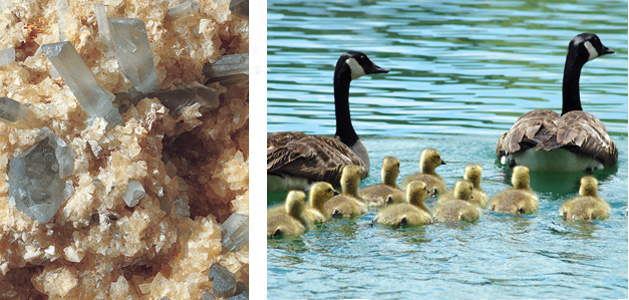
Metabolism
is the set of processes by which living things change molecules and energy into forms they can use. Some metabolic processes break down food molecules into energy. Other processes assemble molecules into more complex forms for growth. Many forms of metabolism require oxygen.
Movement.
Most living things move in some way. Plants have internal motions, such as the flow of sap. Plants also bend toward light. Many flowers close at night. Movement is more obvious in most animals. But some animals move only internally. For example, a sponge circulates water through its body. But its body stays in one place.
Responsiveness.
Living things sense and respond to changes in their surroundings. Changes that produce responses in organisms are called stimuli. Such factors as light and temperature can serve as stimuli. The responses take various forms, most of which involve some type of movement. For example, a turtle can retreat into its shell. A plant can grow toward the sunlight. A bacterium can swim away from harmful substances.
Adaptation.
Living things adapt to changes. Many adaptations occur in response to changes in an organism’s surroundings. For example, if a person goes to a foreign country, the traveler’s body may adapt to the different climate or diet by changing its metabolism. Such changes help maintain a stable set of conditions inside the body. This stable set of conditions is called homeostasis.
Living things develop more long-term adaptations through evolution. Such adaptations result from mutations. Mutations are changes in an organism’s genes (hereditary material). Most mutations are harmful. But some mutations actually help an organism survive and reproduce. For instance, mutations have made some species of insects resistant to certain insecticides. Such beneficial mutations give the organism a better chance of surviving and passing its genes on to offspring. In this way, the mutation becomes more common in future generations through a process called natural selection.
Living things and their environment
An organism’s physical environment includes such features as geologic formations, climate, and soil conditions. Other living things in the same area make up the organism’s biological environment.
The physical environment
determines which kinds of organisms can live in a given place. Life as we know it can exist only within a small range of temperatures. Sunlight is also essential to many kinds of organisms. Conditions friendly to life occur on and near the surface of Earth in a thin region called the biosphere. In general, areas with a warm climate and plenty of water have a great variety of living things.
Certain organisms, called extremophiles, are adapted to live in extremely hot, cold, dark, dry, or even poisonous physical environments. Some extremophiles can even make food from chemicals instead of sunlight. This process is called chemosynthesis. Some kinds of bacteria and archaea—another type of single-celled organism—are extremophiles.
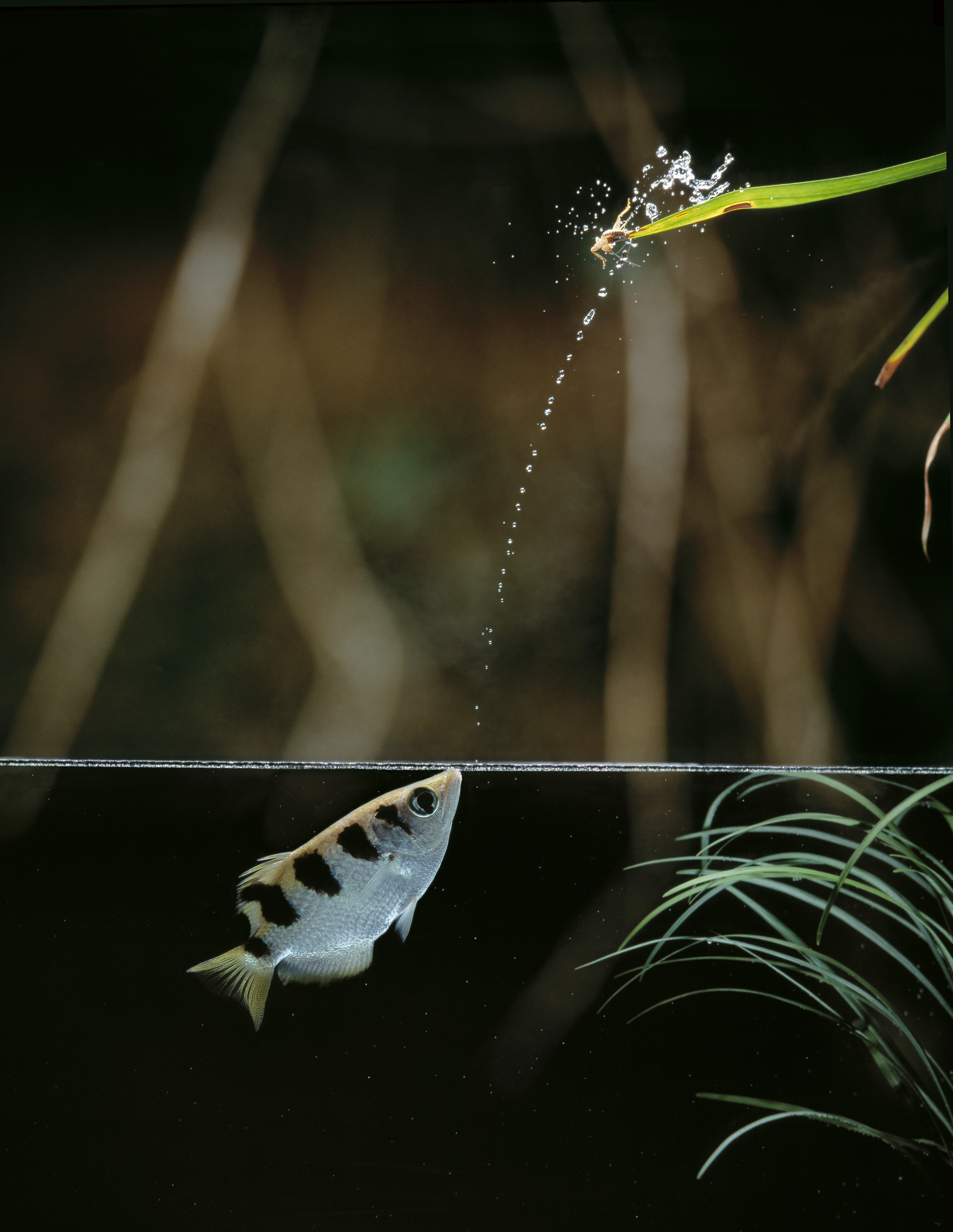
The biological environment.
Although some organisms get food energy from photosynthesis or chemosynthesis, most living things depend on one another for food and survival. Organisms interact with one another in many ways, including predation, parasitism, competition, and mutualism.
Predation
occurs when one organism eats another. Living things eat each other to get nutrients and energy. People normally think of predation as one animal eating another. But to a biologist, predation also includes animals eating plants.
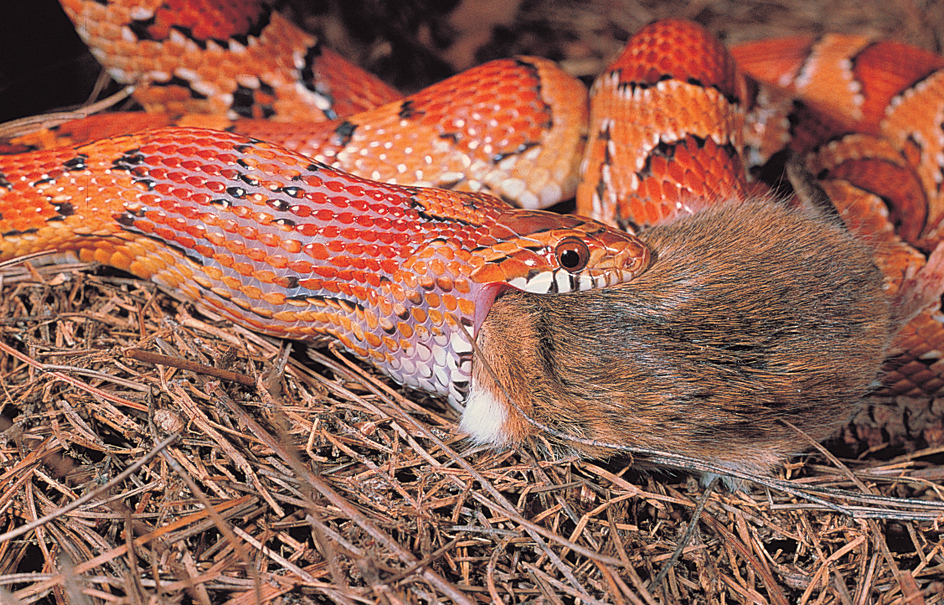
Parasitism
occurs when one organism, called a parasite, lives inside or on the body of another organism, called a host. The parasite takes its food from the tissues or digestive system of the host. For example, some tapeworms live in the intestines of human beings. There they absorb digested food.
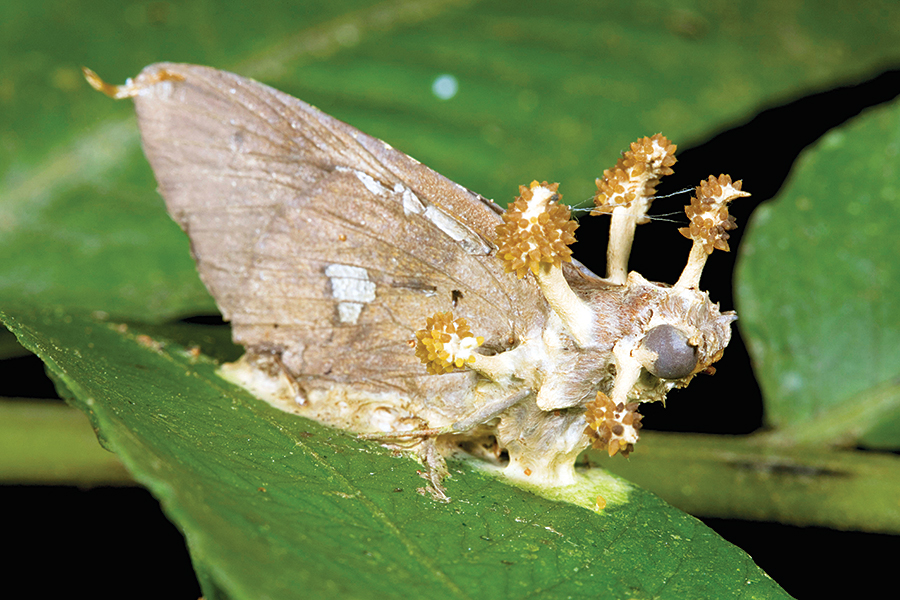
Competition
occurs when two or more organisms require the same resource, such as food or nesting space. Competition may take place between individuals of the same species. For example, a cluster of oak tree seedlings might compete for water, nutrients (nourishing substances) from the soil, and light. Competition also occurs between individuals of different species. For example, robins, bluebirds, and mockingbirds compete for insects and fruit to eat.
Mutualism
is a relationship between two organisms of different species that benefits both organisms. A familiar example of mutualism is the relationship between honey bees and flowering plants. The bees gather nectar from the flowers for food. In doing so, the bees also carry the flowers’ pollen from one plant to the next, helping the plants reproduce.
Loading the player...How a bee makes honey
Other interactions.
Some organisms interact in other ways. Some bacteria and fungi, for example, get their food from the decaying remains and waste of other organisms. Social organisms, such as ants and human beings, form interconnected communities. They work together to get food and defend themselves.
The structure of living things
All living things are made up of cells. The simplest organisms, including bacteria and archaea, live their entire lives as a single cell. Some single-celled organisms form colonial organisms. Such organisms consist of a loosely organized group of similar cells.
Most species of animals and plants are multicellular organisms. They are made up of many kinds of cells. Each kind of cell has its own special functions. The simplest multicellular animals include sponges and jellyfish. Sponges have some specialized cells, but they mostly resemble colonial organisms. If the cells of a sponge are separated, they can readily rejoin and form a new individual. Jellyfish are more organized and have well-defined tissues. Still more complex animals have organs and organ systems.
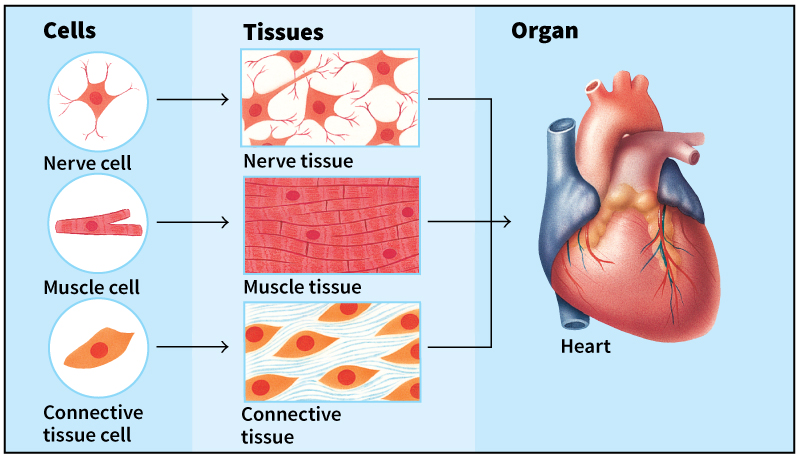
Cells
come in many different shapes. Many cells resemble a bubble, with a thin covering separating the cell from its surroundings. This covering is called the plasma membrane or cell membrane.
All cells contain organelles. Organelles are structures within the cell with a specialized function. The insides of more complex cells are divided into two distinct parts: an organelle called the nucleus and the cytoplasm. The nucleus contains most of the chromosomes. Chromosomes are the hereditary material that regulates nearly all cellular activities. Genes are found on chromosomes. The cytoplasm contains many kinds of organelles. Each type of organelle has a specific task, such as making proteins or converting the energy of food molecules into usable forms.
The cells of bacteria and archaea lack a well-defined nucleus. These cells are called prokaryotic. Prokaryotic means before the nucleus. The cells of animals, plants, fungi, and simple organisms called protists are eukaryotic. Eukaryotic means having a true nucleus.
Tissues, organs, and organ systems.
Complex organisms have many specialized kinds of cells. The cells are grouped together to form larger structures. A tissue consists of a collection of cells with a similar structure and function. Animal tissues include muscle tissue and nerve tissue. Plants also have several kinds of tissues. For example, a tissue called xylem carries water and minerals from the roots to the rest of the plant.
An organ consists of several types of tissues. The human heart, for example, is an organ. It is made up of muscle tissue, nerve tissue, and connective tissue. Other animal organs include the brain, liver, and kidneys. The principal organs of flowering plants are roots, stems, leaves, and flowers. Organs are the basic structural and functional units of complex organisms.
In complex animals, each important life function is carried out by a group of organs working together. Such a group is called an organ system. Major organ systems include the circulatory system, digestive system, and reproductive system.
The chemical basis of life
Living cells are made up of chemical elements that are also found in nonliving things. In most organisms, the most common elements are carbon, oxygen, and hydrogen. Living things also contain smaller amounts of other elements. They include calcium, chlorine, magnesium, nitrogen, phosphorous, potassium, and sulfur. These elements combine in complex ways to form the building blocks of organisms and other substances necessary for life.
Water
is the simplest chemical compound of importance to living things. Most organisms consist of from 50 to 95 percent water. Many properties of water make it essential to life. For example, water can easily dissolve many substances. The solvent ability of water enables chemical reactions to take place in the bodies of organisms. Water can also transport nutrients within organisms. Human blood, for example, transports sugars, minerals, and other important chemicals dissolved in water.
Carbon.
Most of the other principal compounds in living things contain carbon. Compounds that contain carbon are called organic compounds. Carbon is important to life because its atoms can help form a huge number of differently shaped molecules. This versatility enables organic compounds to serve a wide variety of functions within the body. Because only carbon seems to work so well as a building block, it is difficult to imagine life as we know it based on anything except carbon.
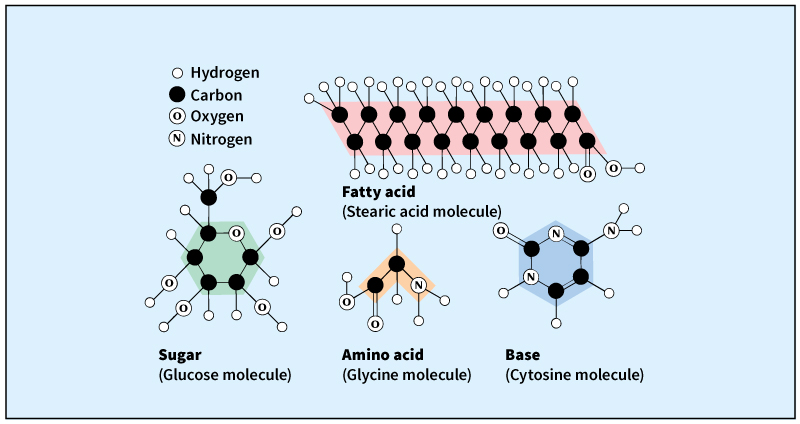
Almost all living material is made up of about 50 kinds of carbon-containing molecules. These molecules, in turn, combine to form larger, more complex macromolecules. There are four main types of these macromolecules. They are carbohydrates, lipids, proteins, and nucleic acids.
Carbohydrates
consist of carbon, hydrogen, and oxygen. The basic carbohydrate molecules are simple sugars. These sugars provide the energy to power most cellular processes.
Living things combine simple sugars into complex carbohydrates. Some complex carbohydrates serve as a means of storing food. Starches are the main carbohydrate storage material in plants. Glycogen serves the same function in animals. Other complex carbohydrates provide structural support. For example, the stiffness of wood comes from large amounts of a complex carbohydrate called cellulose.
Lipids
consist mostly of carbon and hydrogen. But they also contain a small amount of oxygen. Simple lipids include animal fats and vegetable oils. Many kinds of organisms store food in the form of such lipids.
Other important lipids are more complex. Phospholipids contain phosphorus. Some of them also contain nitrogen. Layers of phospholipids form the basic structure of cell membranes. Steroids are another kind of complex lipid. Steroids include certain kinds of hormones, which act as chemical messengers within the body. Cholesterol, a fatty substance in animal tissue, is also a steroid.
Proteins
are molecules far more complex than carbohydrates or lipids. They are also the most common macromolecules in living cells. Proteins are made up of smaller units called amino acids. All amino acids contain carbon, hydrogen, nitrogen, and oxygen. About 20 different kinds of amino acids are found in proteins. Each protein molecule may consist of from about 50 to more than 1,000 amino acids.
Because there are so many different ways to arrange amino acids into a protein, proteins can carry out a vast variety of tasks. Some proteins serve as major structural materials. Such proteins include keratin, found in hair, and myosin, found in muscle. Other proteins, called enzymes, speed up specific chemical reactions within cells. Enzymes also determine which chemical reactions will take place in a cell.
Nucleic acids
serve as the control center of living cells. A nucleic acid’s chemical structure functions like a code. This code determines the production of a cell’s proteins—and thus, the cell’s entire structure and activity.
Nucleic acids are made of long chains of smaller molecules called nucleotides. Nucleotides consist of carbon, hydrogen, nitrogen, oxygen, and phosphorus. There are various types of nucleotides. Different arrangements of these nucleotides form physical patterns that act as codes.
There are two main types of nucleic acids. The first, DNA (deoxyribonucleic acid), carries the hereditary information that an organism passes to its offspring. A cell’s chromosomes are made of DNA. Each gene in a chromosome is simply a short segment of DNA. A piece of DNA may consist of many millions of nucleotides. Genetic mutations, which drive the process of evolution, occur in DNA.
The second type of nucleic acid is called RNA (ribonucleic acid). RNA transmits the DNA’s code to protein-making structures called ribosomes. There, the code serves as instructions for the ribosome to put amino acids together to make proteins.
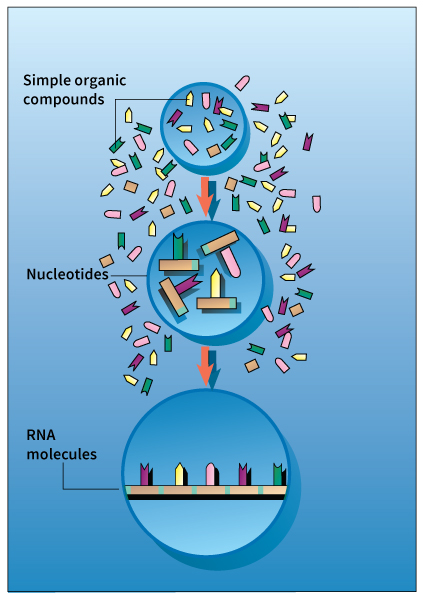
The origin of life
People have long wondered about life’s origin. Some people consider the highly organized structure of living things to be evidence that a supernatural being crafted all of Earth’s organisms. The British naturalist Charles Darwin challenged this view in the 1800’s. Darwin theorized that all living things evolved from a single ancestor. Almost all scientists accept this idea. But they are less sure about the nature of the very first living things and how they came to exist.
Religious explanations.
Nearly all religions have creation stories to explain the origin of life. In many of these stories, one or more gods created living things or helped prepare the world for their arrival. In the Bible’s book of Genesis, God creates a man and other living things from the earth. The Qu’rān, the holy book of Islam, tells a similar story about God’s creation of human beings.
Modern religious thinkers interpret these stories in various ways. Some religious people believe their God created life exactly as their holy books say. Others interpret the texts as symbolic stories.
Spontaneous generation
was a belief that originated in ancient times. It remained popular for thousands of years. According to this idea, some organisms arise fully formed out of nonliving matter. For example, people often saw flies on decaying meat. They concluded that maggots, the wormlike young of flies, were generated (born) from the meat. Similarly, people believed mice were generated from piles of old rags.
During the mid-1600’s, an Italian scientist named Francesco Redi conducted experiments showing that meat sealed from flies would not develop maggots. The French chemist Louis Pasteur further disproved spontaneous generation during the mid-1800’s. He demonstrated that even bacteria cannot arise spontaneously. Instead, bacteria always grow from other bacteria. After Pasteur’s experiments, most biologists accepted the idea that all life today comes from existing life.
Modern explanations.
Plentiful fossils provide evidence that modern living things evolved from prehistoric ancestors over the last 500 million years or so. But the very first living things were too small and too simple to leave behind much fossil evidence. This fact makes it difficult for scientists to determine how life began. Scientists think that life probably first arose on Earth more than 3 1/2 billion years ago.
Most scientists favor the idea of chemical evolution as the best explanation for life’s origin. According to this idea, simple organic compounds formed naturally early in Earth’s history. These simple compounds combined with one another to form the complex structures associated with living things.
Chemical evolution was first proposed during the 1920’s by Alexander I. Oparin, a Soviet biochemist, and by J. B. S. Haldane, a British biologist. Although they were unaware of each other’s ideas, both men claimed that life developed from chemical reactions in Earth’s atmosphere and oceans.
Creating simple organic compounds.
Oparin and Haldane both thought that certain compounds, such as ammonia, would have been common in Earth’s early atmosphere. They proposed that various sources of energy, such as ultraviolet radiation from the sun, powered reactions among these compounds. The chemical reactions produced such simple organic compounds as sugars and amino acids.
In 1953, two American chemists—Stanley L. Miller and Harold C. Urey—provided the first experimental evidence supporting chemical evolution. They subjected a mixture of water, methane, ammonia, and hydrogen to energy from high-voltage sparks, much like lightning, for several days. After that time, amino acids and other simple organic compounds had formed. This proved that Oparin and Haldane’s ideas about the formation of organic compounds were possible under certain conditions.
However, researchers now think that Earth’s early atmosphere consisted of different chemical compounds than Miller and Urey used. Several researchers repeated the experiment under these revised atmospheric conditions and were unable to produce organic molecules. Some more recent experiments, using different but still plausible conditions, have produced organic molecules. But it is still unclear if the first organic compounds on Earth could have formed merely as a result of the planet’s atmospheric conditions at the time.
Some scientists think Earth’s early atmosphere did not play a direct role in the emergence of the first organic compounds. Instead, they argue that some or all of these compounds developed in the deep sea. The compounds may have appeared around submerged volcanoes or hydrothermal vents (hot springs). In addition, some organic compounds may have come from carbon-rich meteorites called carbonaceous chondrites. Scientists have found several such meteorites containing many simple organic compounds.
Developing complexity.
The existence of simple organic compounds is not enough to explain the origin of life. These compounds would still need to combine. They would have to interact with one another in complex ways, forming proteins, nucleic acids, and other large chemical compounds. Scientists have developed several ideas that could explain the transition from simple organic molecules to the complex structures that make up living cells.
One idea involves clays and other minerals on the early Earth. The surfaces of such materials could have acted as catalysts—substances that enable or speed up chemical reactions. In this way, certain surfaces may have helped link simple compounds into more complex structures.
Another idea is based on the observation that certain lipids, when mixed with water, naturally form bubblelike membranes. These membranes enclose a small amount of water and are about the size of a small cell. They even divide under certain conditions, suggesting a primitive form of cellular reproduction. Such lipid membranes may have enclosed groups of complex organic compounds, forming the first primitive cells.
The puzzle of replication.
An essential feature of living cells is their ability to replicate (copy) their own genetic code. Without this ability, they could not divide to produce new cells. In almost all modern cells, the genetic code is contained in DNA. Proteins can only be made from instructions in the DNA’s code. But DNA can only be produced through the action of protein enzymes. Thus, protein enzymes are needed to replicate DNA, and DNA is needed to make the protein enzymes. This situation leads scientists to question which developed first.
Many scientists believe that RNA is the key to solving the puzzle of replication. RNA molecules can cause the creation of more proteins and more RNA. Thus, RNA could have acted as both replicator and enzyme in early living things. DNA and the modern process of replication could have developed from this earlier “RNA world.”
Panspermia.
Another possibility is that life began elsewhere in the solar system or the universe. According to this idea, called panspermia, especially hardy organisms could have been carried to Earth from outer space. They might have traveled on a comet or meteorite. But even if such a journey is possible, panspermia leads to the question of how life began elsewhere.
The search for life on other planets
The idea of chemical evolution suggests that life arises naturally under certain conditions. Such conditions may have existed in many places throughout the universe. Thus, life may have arisen on many other worlds. Any life that may have originated beyond Earth is called extraterrestrial life. The search for and study of extraterrestrial life make up a major branch of astrobiology.
Most astrobiologists believe that the chemical basis of extraterrestrial life would basically resemble that of life on Earth. But organisms on another planet would have evolved in response to the environmental conditions there. As a result, these organisms would almost certainly differ greatly from those on Earth.
In our solar system.
The development of space travel during the 1960’s and 1970’s provided the opportunity to search for life on other planets in our solar system. At that time, scientists thought that life might exist on the two planets closest to Earth—Venus and Mars. The harsh environments on the other planets in our solar system make it unlikely that life could exist on them.
During the 1960’s, the United States and the Soviet Union sent missions to Venus. These missions revealed that environmental conditions on the surface of Venus could not support life as we know it. But some scientists believe that organisms could exist in Venus’s clouds.
In 1976, two United States space probes, Viking 1 and Viking 2, landed on Mars and performed several experiments to test for life. These experiments indicated chemical activity in Martian soil but failed to detect any life.
In 1996, some scientists claimed to have found evidence of Martian life in a 4.5 billion-year-old meteorite discovered in Antarctica. The meteorite carried objects roughly 3.6 billion years old that resembled microscopic fossils of bacteria. It also contained some kinds of organic molecules that are associated with living things on Earth. But most scientists remain unconvinced that the Martian meteorite contains believable evidence of life.
Nonetheless, many scientists believe life may yet be found in our solar system, either on Mars or on Europa, a moon of Jupiter. Liquid water exists or once existed on both Mars and Europa. Both worlds have chemical energy sources that could support life.
In other solar systems.
Astrobiologists think that many stars beyond our sun may have planets on which life could exist. However, enormous distances separate Earth from these stars. With our present technology, it is difficult even to detect the presence of other planets, much less to search for life on them. But as technology improves, astrobiologists hope to observe the atmospheres of distant worlds. Then they could search for traces of telltale gases given off by living things.
Scientists also hope to learn about life on distant planets by listening for messages sent by intelligent beings who might inhabit them. Some scientists have begun using radio telescopes to listen for signals from distant civilizations.
